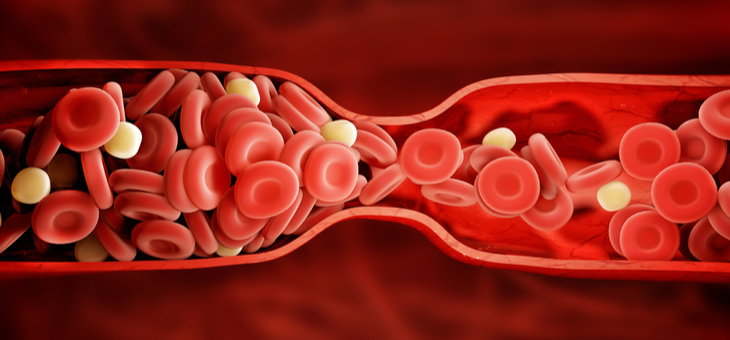A blood clot is a clump of cells and protein in your blood. Blood clots form to slow down bleeding when you are injured, but slowly dissolves as you heal.
There are times, however, when blood clots will form when they are not needed, and this can cause the clump to clog up or completely block blood vessels, creating a dangerous situation.
When a blood clot occurs in an artery, it’s called an arterial clot. This type of clot causes symptoms immediately and requires emergency treatment. The symptoms of an arterial clot include severe pain, paralysis of parts of the body, or both. An arterial clot can lead to a heart attack or stroke.
A blood clot that occurs in a vein is called a venous clot. These types of clots may build up more slowly over time, but they can still be life-threatening. Deep vein thrombosis (DVT) is the most serious type of venous clot.
Here are four signs to watch out for in the case of a blood clot.
Swelling
When a clot slows or stops the flow of blood, it can build up in the vessel and make it swell. If it happens in your lower leg or calf, it’s often a sign of DVT. But you also can have a clot in your arms or belly. Even after it goes away, one in three people will still have swelling and sometimes pain and sores from damage to the blood vessel.
Skin discolouration
If your arms or legs display a bluish or reddish discolouration, it could be a sign that a clot is blocking your veins in the area. The skin may even stay discoloured from damage to the blood vessels after the incident has cleared.
Pain
A clot often hurts where it’s located, perhaps in your lower leg, stomach or under your throat. Sudden, intense chest pain could mean the clot has broken off and caused a pulmonary embolism. Or it could be a sign that a clot in your artery is giving you a heart attack. If so, you also might feel pain in your arm, especially on the left.
Difficulty breathing
This is a serious symptom. It could be a sign that you have a clot in your lung or your heart. Your heart might also race, or you may feel sweaty or faint.
If you suspect you have a blood clot, see your doctor or go straight to hospital for further investigation. These situations can be life threatening and the sooner you act, the better chance you have of minimising the damage.
Have you ever been hospitalised with a blood clot? Did you know the warning signs to watch out for?
For more information, visit WebMD.
Related articles:
The dangers of not eating fish
Wrinkles linked to heart deaths
Tips for coping with ‘sundowning’
Disclaimer: This article contains general information about health issues and is not advice. For health advice, consult your medical practitioner.

